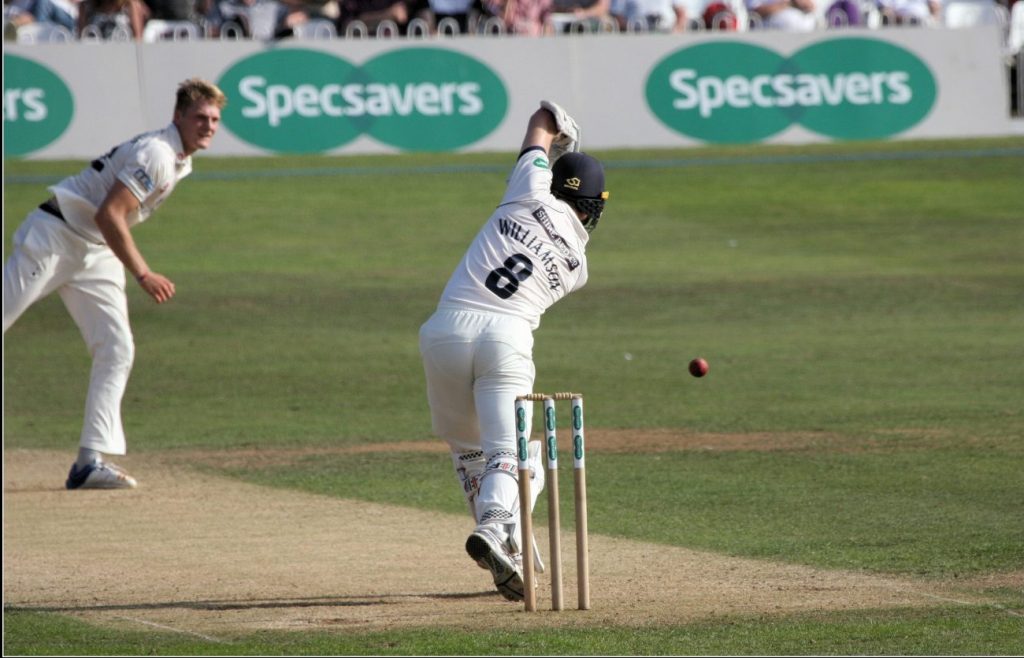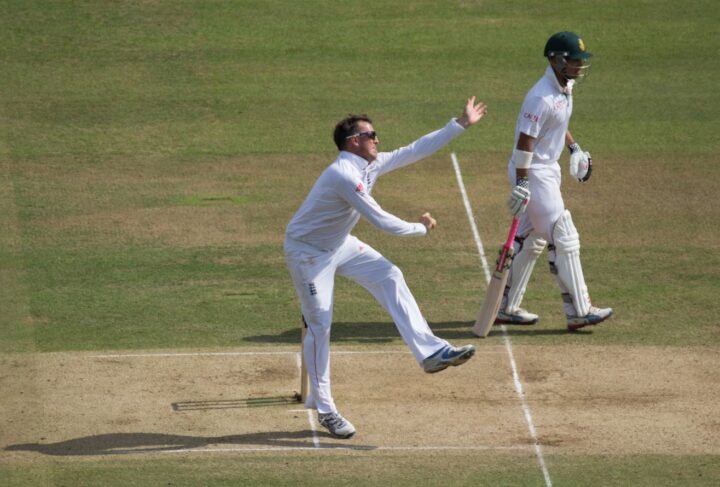The very first World Test Championship, which we shall call WTC from now on, came to a close in June with the Kiwis becoming the first country to have their name engraved on the trophy. The WTC was a positive initiative from the International Cricket Council to promote Test cricket amidst the popularity of T20 and the rise of franchise cricket. In the following article, we are going to look at what worked with the WTC and what didn’t work so well. We’ll also suggest some changes for the next edition.
The Inequality
| Matches in Series | Points for Winning | Points for Tying | Points for Drawing | Points for Losing |
| 2 | 60 | 30 | 20 | 0 |
| 3 | 40 | 20 | 13 | 0 |
| 4 | 30 | 15 | 10 | 0 |
| 5 | 24 | 12 | 8 | 0 |
The table above indicates the points available for matches in the WTC based on how long the series is. To make sure there was parity and fairness with the points structure, the ICC allocated a max of 120 points for every series that took place. However, this was not really an ideal points structure since the teams did not play the same number of games. Each Test therefore had a different number of points.
For instance, a victory in a two-match series netted the winner 60 points, while a victory in a three, four, or five match series would see the victor awarded 40, 30, and 24 points respectively. This structure was therefore beneficial to those teams such as Sri Lanka, New Zealand, West Indies, and Bangladesh since they often played shorter series compared to the so called big three.
The ICC have recently decided to correct this by awarding equal points for all games in the next edition of the WTC – every win in the 2021-23 WTC will be worth 12 points, regardless of how many games are played. Four points will be awarded for a draw and six for a tie. This seems to be a step in the right direction – especially as the ICC has confirmed that all nine of the major Test playing nations will host three series and play three series away during the next cycle.
Restructuring after the pandemic
The global pandemic caused, well, pandemonium in the first WTC. The ICC decided to change the points structure to compensate for the matches that were lost. It had been hoped that the postponed series could be played at some stage, but due to the busy schedule it was decided that this wasn’t possible. The ICC then declared that a team’s position would be determined by their percentage of points earned – this was calculated as the number of points won versus the total number of points that were available.
This put the likes of Australia and India, who were at the top of the tree, at a sudden disadvantage. To add to this, since some series were completely cancelled, it seemed unfair that some teams played more qualifying games at home than away. For instance, New Zealand had their away series in Bangladesh cancelled; therefore some teams played more series at home in favourable conditions than tours in trickier conditions.
Teams did not play the same number of matches either. For example, England played 21 matches, while the likes of Bangladesh only played 7. Obviously, the ICC could not have predicted the havoc that the pandemic caused, so hopefully there will be no need to do any similar restructuring during the next edition.
Outcome orientated approach
The WTC was created to try and provide some context to Test cricket as well as give teams an incentive to go for the win. This forced groundsmen to prepare ‘result pitches’ that might lead to memorable 4th innings chases – at least in theory. Since the year 2000, 32% of Test matches have ended in a draw, but during the WTC this draw percentage dropped all the way to just 13%.
When you look at the highest total batting aggregate in Test matches since 2000, and then compare those scores with the highest total batting aggregate in the WTC, you’ll see that the total aggregates were much lower during the WTC. This is probably a positive development as nothing kills Test cricket like bat dominating ball for five days and a series of bore draws.
However, there’s a balance to be struck. Nobody wants games to be over in two or three days, either. What Test cricket needs most is an equal contest between batsmen and bowlers. More about that later …

The format for the final
The ICC WTC Final was played from the 18th-23rd June with New Zealand coming out on top. A number of former cricketers, such as Ravi Shastri, Sachin Tendulkar, and Krishnamachari Srikkanth, moaned that the winner should be decided over a three-match Test series as this would lead to more drama and give teams the opportunity to come back. Virat Kohli, echoed these exact sentiments after the final, although many accused him of having sour grapes. It was clear, however, that New Zealand had enjoyed an advantage. Their series against England immediately beforehand gave them the perfect chance to acclimatise to conditions. India, on the other hand, were undercooked.
While a three-test match final would be great for the cricketing world, it would cause a number of logistical issues for the ICC. What’s more, the two Test playing participants would probably have to find a free month in their busy schedules to make room. This is obviously difficult due to the different T20 leagues and the bilateral series that take place all over the world. It would be nice, of course, if Test cricket was the priority. But is this realistic nowadays?
Pitches and participants
The pitches for the first WTC were based on existing agreements between countries, meaning that the ICC did not organise the tours like they do for the World T20, World Cup, or Champions Trophy. The pitches at the WTC were therefore curated by the home groundsmen without someone neutral intervening. This meant that home teams could doctor the pitches and play to their strengths. This exacerbated home advantage and made it even more difficult for tourists – a longstanding problem that isn’t in the best interests of Test cricket. The ICC could solve this problem by appointing neutral curators to supervise WTC matches in the next edition.
It was also disappointing not to see all twelve Test playing countries participating in the WTC. Countries such as Afghanistan, Zimbabwe, and Ireland could have given the likes of Sri Lanka, Bangladesh, and the West Indies a run for their money. They might even have caused the odd upset.
By not including these teams, the ICC actually undermined their main aim of marketing and expanding Test cricket to newer countries. Surely opening the WTC to all would have increased its audience and made the sport more accessible and interesting?
Looking ahead
Looking ahead to the next WTC cycle, we’d like to see the following changes implemented: an equal number of matches for all teams, all twelve Test playing nations involved, a three match series rather than a one-off final, plus ideally a two-tier structure with two groups of six and the possibility of relegation and promotion.
Obviously it would be difficult to implement the latter at the current time. However, it should definitely be an aspiration. All sports grow more effectively if there’s a clear pathway to the elite level.
Meanwhile, there’s no doubt that cricket’s existing structures and tournaments will continue to inhibit the creation of a perfect model. How would five-match Test series like the Ashes, for example, fit into the WTC? Nobody wants to shorten the Ashes to three games. But smaller nations don’t currently have the resources to play five-match series either. Perfect symmetry will therefore remain elusive.
What tweaks would you make to the WTC? And what do you think its future might look like?
Rob Oosterwijk









If you want to be as even handed as possible you need to come up with a system that takes all the major variables into account, like playing conditions, standard of the opposition and where you’re playing, as over the years winning any test series away from home has been difficult. Something along the lines of the De Loitous rating principle with a committee of ex players from all test playing countries might be a decent starting point. There is no doubt anything to add competitive point to a potentially dead match is desirable. For me though it has to be over a more than a calendar year to reflect a fairer assessment. Every 4 years would be more realistic, as it gives more countries a chance to play each other, but it might lose its edge leaving things that long. Also making it too complicated might alienate public interest, so it’s something that needs developing by stages to test its effectiveness. I can also understand that if test matches are never a one off why should the final be exactly that, but then you have the problem of how interested would the public in a neutral country be in a test series not involving their team. It needs more than the ICC involved in administering it to be seen as impartial with the active participation of all the national bodies involved.
I think the team that comes top of the standings should be given home advantage for a 3-match final. Seems like a simply solution and should ensure some good crowds.
I disagree. How would one even slot in say an England – Australia final? Also teams could end up being penalised for not playing Bangladesh, and thus missing out on home advantage. Which is too much of an advantage to begin with.
With the new format a 5000-Test series against Bangladesh is a sure-fire way to get to the final, simply because each match is worth as many points as the next, regardless of the quality of the opposition. That can be gamed. And undoubtedly it will be gamed. If not directly, then indirectly (eg. by cash incentives to shorten a tour to say Sri Lanka or New Zealand).
Make it neutral grounds / or award hosting rights as a prize to the third ranked (and thus not playing) team. That also gives teams something to play for, even if they can’t make it to the WTC.
India – New Zealand may well have been a complete dud if it was held in either India or New Zealand.
Excellent article. I would certainly like to see all test playing nations involved and all test matches should count towards the WTC. Overall, and under the extraordinary circumstances, the WTC has worked but there is scope for improvement.
Firstly, there was no global pandemic except in the sense a “pandemic” was redefined to mean widespread cases rather than deaths and those “cases” were generated by a flawed test being used in a way and for a purpose its creator rejected. Funny how the Olympics are going ahead despite “cases” and WHO suddenly discovers that life has risks and we should all learn to live with them. The troubles in the WTC were caused by government-imposed lockdowns which is not the same thing at all.
On the WTC I’d agree with all the suggested improvements (including James’s about the No.1 team in the tabe having home advantage) but they aren’t going to happen. I’d like a ‘win bonus’ for away wins but that’s about as likely to happen as serious action on over rates.
The fundamental problem is that the WTC isn’t about spreading the game or saving Test cricket. It’s about trying to squeeze a last bit of revenue from a format destined for the knackers’ yard (or at best the quiet corners of some country estates where it can join polo as the amusement of a privileged few). It can’t solve the problem that every team outside the Big Three except NZ is declining markedly in standard through a mixture of under-funding and internal mis-government.
The big boys care much more about their own franchise tournaments, winning white-ball tournaments and getting cricket into the USA. They don’t see white-ball cricket as a gateway into the longer form, it’s always been the end in itself. The WTC can stagger through one more cycle but it would be a brave man to bet much on it in the 2030s.
You are aware, I assume, Simon, that the “refinition” of the word pandemic you talk about is exactly what it means in the first place! It has nothing to do with deaths–although there are usually lots in a pandemic.
Mind you, a million or so deaths in a population of 7 billion would seem to me to come within the meaning of “widespread”.
Of course there are arguments to be had about whether governments approached Covid the right way, or whether they interpreted the evidence correctly, but pretending that nothing remotely out of the ordinary happened is both staggeringly insensitive and incredibly ignorant.
Also I disagree strongly with the statement that shorter series favoured smaller nations. Sure a win in a two Test series is 60 points rather than say 30 or 24 (for 4 / 5 Test series), but a washout could be very costly to teams playing in short series too (to the tune of 40 points, while in a 5 Test series the damage is just 16 points). And while it might be harder to get a 5-0 score line in a Test series, there are not that many Test series that were say 3-0 whitewashes that would have had a more flattering scoreline if the series had been elongated – although the British press strongly disagrees (see previous Ashes down Under for a “heroic 4-0 loss”.
Never mind that economic power houses can easily schedule 5 home Tests, and then just two away Tests for their away series, to make it easier to qualify. In other words, the new format is even more “money can buy you result” than in the first iteration of the WTC. That is not progress.
It all seems a bit overcomplicated to me…
Peter Drake
Playwright teacher Hexham Northumberland